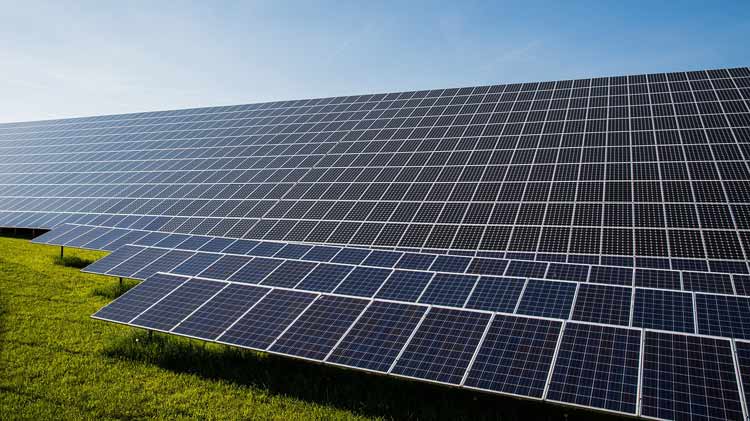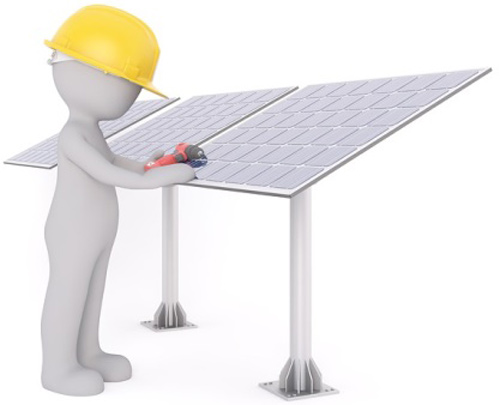
Nearly 4.18 trillion kWh of electricity were generated in the United States at utility-scale electricity generation facilities in 2018, and around 17% was generated from renewable sources. The statistics recently published by the U.S. Energy Information Administration state that approximately 67 billion kWh of the total electricity generated in the country last year were sourced from solar energy, which accounts for the share of merely 1.6%. The picture is similar in European countries, where around 17.5% of the total energy consumed in the European Union in 2017 came from renewable sources. However, the share of solar energy remains significantly low.
Awareness about the benefits of solar energy in offsetting carbon dioxide and other harmful emissions is increasing rapidly, which is boosting the profitable potentials of setting up a solar farm not only in the U.S. but across the world. Yet, there are some practical challenges in commercializing solar installations and setting up solar farm, such as declining oil and gas prices and technical difficulties in integrating electric-power grids with solar in a less expensive way.
The opportunities are immense for solar farmers in spite of such issues; however, some important challenges must be taken into consideration while setting up a solar farm and harvesting solar energy.
Hurdles in Harvesting Solar Energy by Setting up a Solar Plant
Solar construction, albeit much less expensive, has become a ‘costly’ business in terms of skills. Though the cost of setting up a solar farm is declining sharply, the other challenges such as dearth of a labour force with appropriate skills and experience and sync with ever-evolving technologies amid the ongoing pursuit for clean energy are making the solar power business less cost-efficient.
Furthermore, other challenges such as varying site requirements, rapidly multiplying equipment vendors, lack of plant performance assessment tools, and low penetration of efficient tools, continue to restrict the adoption of solar energy as a potential source of producing electricity. However, there are a few basic restrictions that the nature of the solar energy possess, which remain the preeminent blocks for solar farmers today.
The three primary challenges that come with solar energy are its poor dispatchability, its diluted form, and issues with the proximity of a solar farm. Solar companies will have to adopt a correct approach to understand the most important challenges while setting up a solar farm to drive better performance and productivity in the coming future.
1. Maintaining Reliability and Dispatchability of Solar-powered Electricity

Though the world is moving towards clean and green energy sources, the goal to rely completely on solar power is considered unrealistic. Consumers’ demand and needs vis-à-vis electricity are changing every day during every season, and the uncertainty of the solar resources across various regions make it challenging to ensure 100% reliable energy supply.
It has become important for solar farmers to ensure that electricity supply through solar energy matches the highly dynamic end user demand in order to curtail the possibility of blackouts. As the dispatchability of electricity generated through solar energy entirely depends on how much the sun shines through various seasons and geographical regions, solar power continues to remain the less reliable energy than that sourced from fossil fuels.
This makes it mandatory for solar power companies to acquire dispatchable power generators than can amplify or ramp down the electricity supply based on the obtainability of the solar energy, which commonly changes every day. Thereby, farmer must ensure while setting up a solar farm to supplement it with efficient solar generators along with energy storage or batteries, and this can be considered as an additional investment. However, with the prices of batteries plummeting sharply, complementing a solar farm with battery-supplemented generators should help power companies to overcome this challenge and ensure more reliability of the solar power supply.
2. Dealing with the Problem of Diluteness and Intermittency of the Solar Energy Source
On a clear, bright day, nearly 1 kW of sunlight reaches an area of one square meter on the earth only when the sun is directly overhead, and this can differ greatly geographically. As solar cells can convert around 15-20% of the solar energy that reaches earth into electricity, the intermittency of sunlight hampers the efficiency of solar power generation. Furthermore, along with the problem of intermittency, the problem of diluteness of sunlight has always been, and will continue to remain the Gordian knot for solar farmers.
Fossil fuels are the most concentrated forms of sources to generate electricity from, solar energy is dilute on the other hand. The energy density of the fuel source makes a direct impact on other aspects of setting up a solar farm, including the area of land that it taken up by the farm. Lower the density, larger the land that is required to meet the electricity demand of consumers. This reflects in an increased need for additional resources to generate one unit of electricity from solar energy over fossil fuels.
Accomplishing the goal of completely replacing fossil fuels with solar energy as the source for a 100% renewable grid primarily amplifies the need for large areas of land to set up solar farms. As solar energy is significantly low in energy density, this would have a paramount impact on the land-use requirements for solar power plants, making it a primary challenge for power companies while setting up a utility-scale solar farm.
3. Infrastructural Challenges that Come with the Proximities of Solar Farms
While the intermittency, reliability, and land-related challenges associated with setting up a solar farm remain highly critical, solar power companies need to keep in mind the infrastructural and transportation-related hurdles of the business. As solar farms take up a huge amount of space to generate electricity that can meet the ever-growing demand, these farms are situated in remote areas, far from where the energy is actually consumed.
Eventually, solar power companies need to deal with the costly infrastructures and cumbersome transmission line to transport electricity from power generation plants to consumers in urban or rural areas. Though small businesses or residential end users who have enough land to set up a small solar farm can produce their own electricity with solar energy, improving the proximity of their sources on industrial or commercial level becomes a huge challenge in setting up a large-scale solar farm.
In the modern economy, which mainly banks on the equipment and infrastructures that gobble massive amount of electricity, solar farmers must adopt strategies to optimize land efficiency and capitalizing on the more productive ways to transport the electricity over long distances, in order to run a profitable business.





